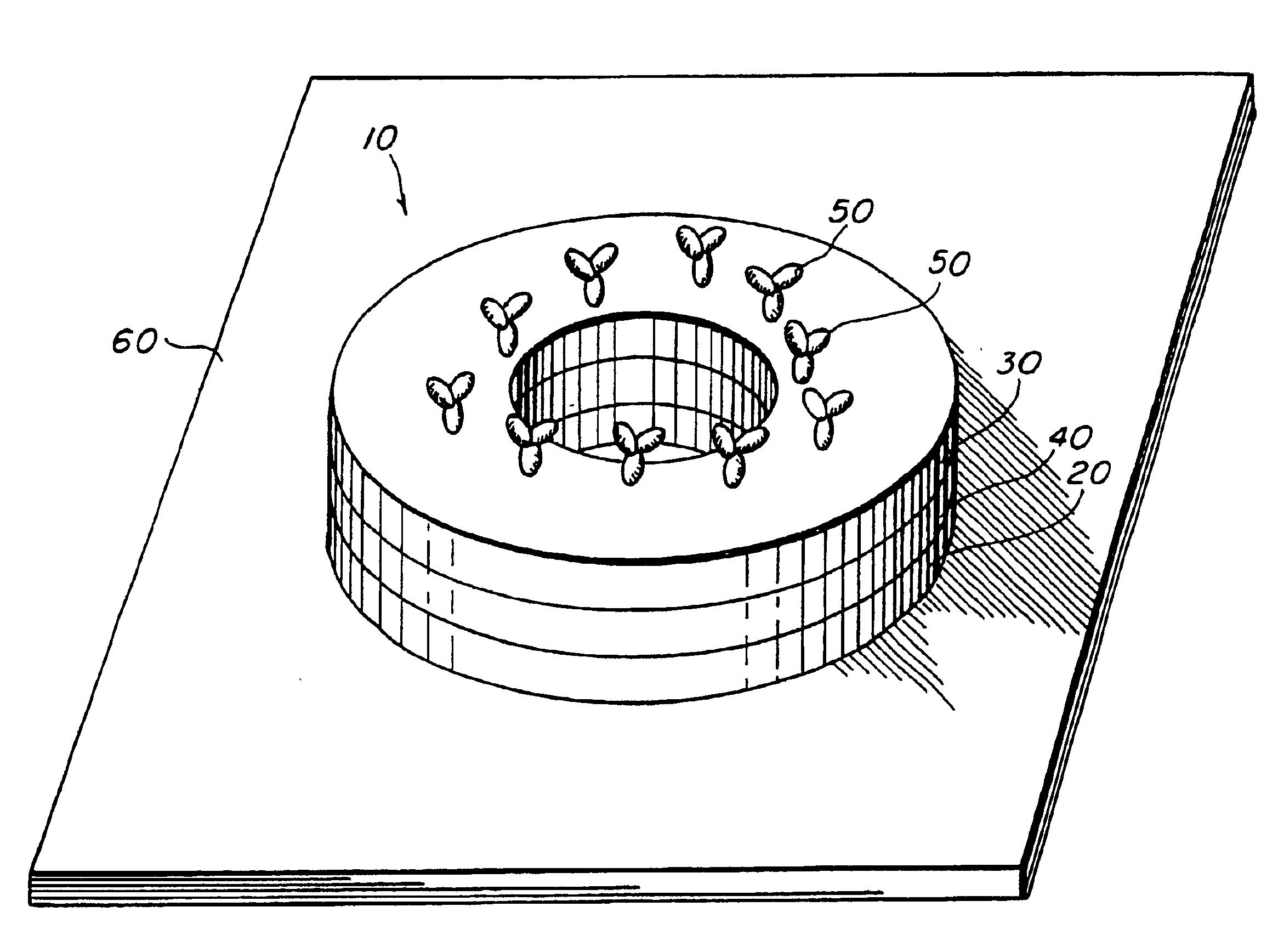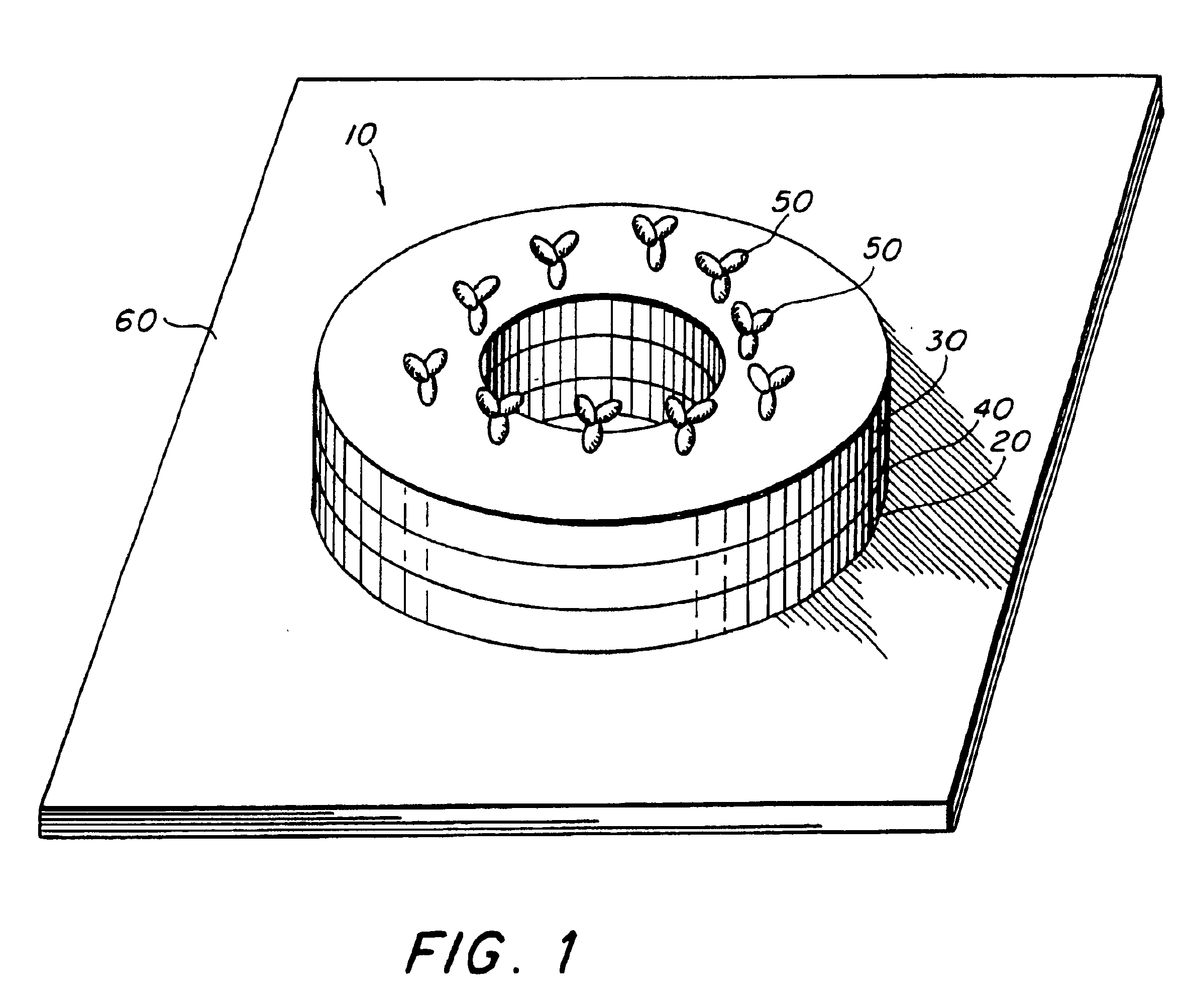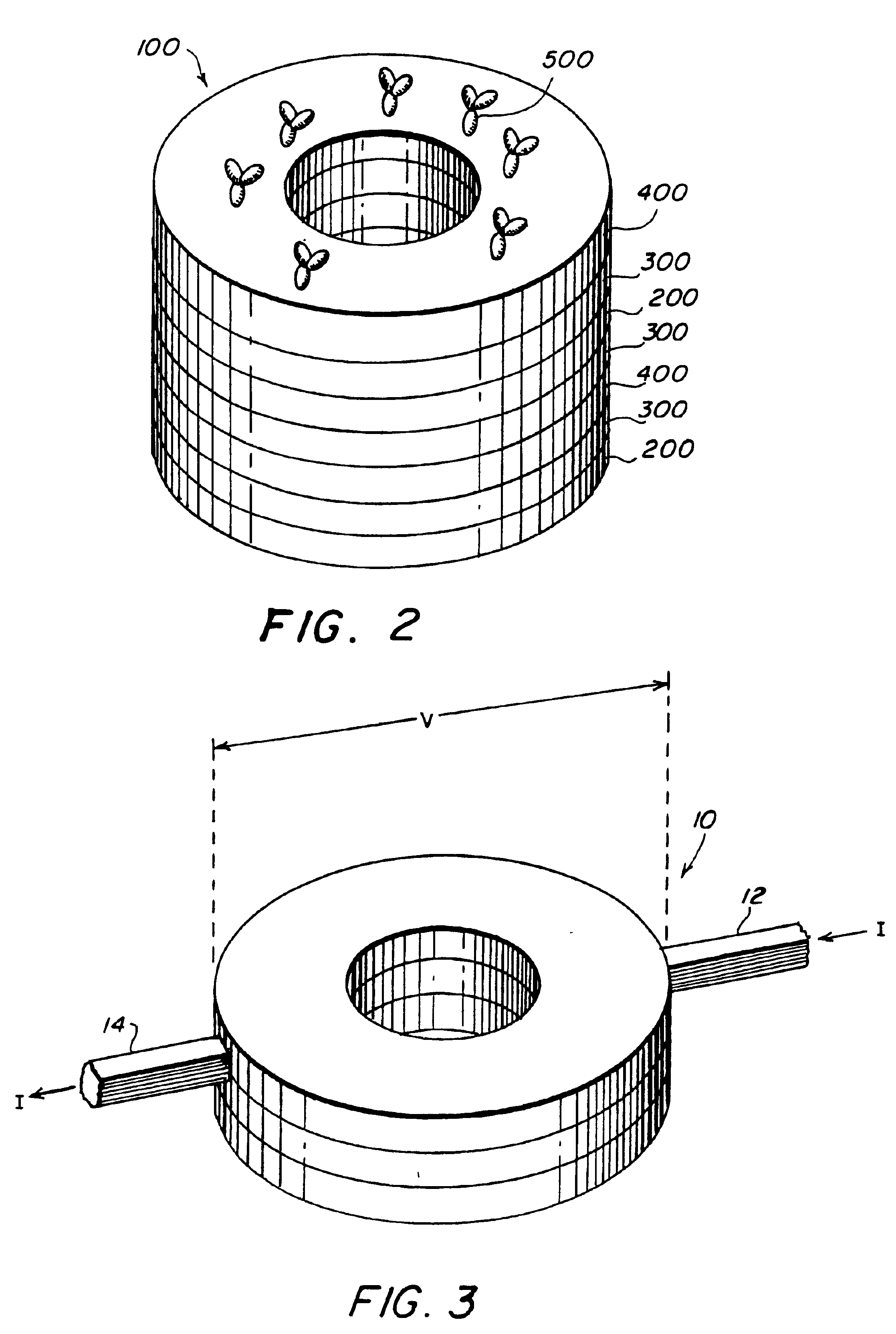High efficiency magnetic sensor for magnetic particles
a magnetic sensor and high-efficiency technology, applied in the field of sensing devices, can solve the problem that the recognition events of binding assays cannot be observed directly, and achieve the effect of maximizing the ability of a magnetic sensing elemen
- Summary
- Abstract
- Description
- Claims
- Application Information
AI Technical Summary
Benefits of technology
Problems solved by technology
Method used
Image
Examples
second embodiment
The second embodiment, also a giant magnetoresistive (GMR) device, uses the above-described structure with the additional effect described Prinz '868 in which an electrical current passing through the ring stack causes the soft layer magnetization to reverse. The radial magnetic field of the magnetic particle coupled with this current induced reversal allows for a threshold to be set by either the current or the particle field and for the threshold to be crossed by either the particle field or the current. The effect of the magnetic field from the particle is to rotate the soft layer moment to a radial orientation. A current sent through either the ring, a coaxial current lead (see above) or combination thereof will then counter-rotate the moments in the soft layer(s) relative to the original orientation. With a bead present providing an additional “boost”, the element is then made to “latch” in a high or low state. This embodiment can also have either a current-in-plane (CIP) confi...
fifth embodiment
A fifth embodiment, also a magnetic tunnel junction (MTJ) device like the fourth embodiment, uses an electrical current as in the second embodiment to “latch” the device. In principle, a “switching” current could be sent down the ring to counterrotate the magnetization of the layers. Practically speaking, the large currents necessary for this would probably damage the tunnel junction. More preferable would be to use a coaxial auxiliary current lead for this purpose.
A sixth embodiment, an anisotropic magnetoresistive (AMR) device, includes one or more ferromagnetic layers and current leads that direct current through the sensing element in a circumferential current-in-plane (CCP) orientation. With no perturbing field from a magnetic particle, the magnetization of the ferromagnetic layers is either parallel or antiparallel to the current. The radial component of the fringing field of a magnetic particle causes the moments of the ferromagnetic layers to align radially and become perpen...
PUM
| Property | Measurement | Unit |
|---|---|---|
| magnetic | aaaaa | aaaaa |
| circular magnetic moment | aaaaa | aaaaa |
| magnetic moment | aaaaa | aaaaa |
Abstract
Description
Claims
Application Information
 Login to View More
Login to View More - R&D
- Intellectual Property
- Life Sciences
- Materials
- Tech Scout
- Unparalleled Data Quality
- Higher Quality Content
- 60% Fewer Hallucinations
Browse by: Latest US Patents, China's latest patents, Technical Efficacy Thesaurus, Application Domain, Technology Topic, Popular Technical Reports.
© 2025 PatSnap. All rights reserved.Legal|Privacy policy|Modern Slavery Act Transparency Statement|Sitemap|About US| Contact US: help@patsnap.com



